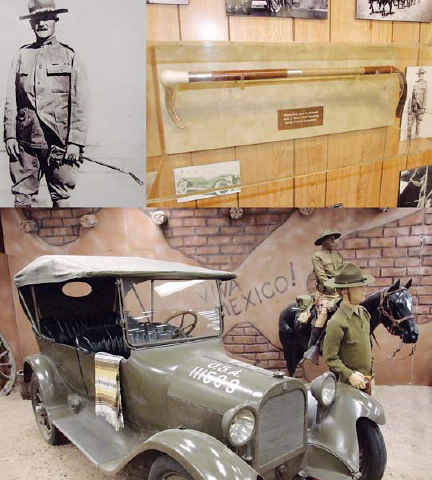
One popular explanation among historians regarding Villa’s motivation for attacking Columbus is that the Villistas raided the town in search of supplies. The 13th Cavalry stationed at Columbus had precisely the resources Villa needed for his ravaged army. He desperately required machine guns, rifles, and ammunition, and there was an ample supply available within the garrison. The military camp and the town’s general stores contained food, clothing, and other provisions vital to Villa’s survival as well.
This theory contended that Villa did not vengefully descend upon Columbus, but rather focused on obtaining resources unavailable to him elsewhere. The assertion is that if Villa’s intentions were to massacre Americans he would have inflicted many more fatalities during the attack. In fact, only 18 Americans were killed during the affair because the Villistas focused the majority of their efforts on acquiring much-needed supplies. The Villistas especially ignored non-combatants, concentrating mainly on the hotels, whose guests were robbed of their money and valuables, and on stores that were well stocked. Single residences were largely disregarded, especially the homes of Mexican-American citizens, who were judged to be not fit for looting. The Villistas were more concerned with stealing horses and acquiring accessible arms and ammunition. Unfortunately for them, the majority of the arms and ammunitions were locked up or well guarded.
In conclusion, the raid on Columbus by Pancho Villa and the subsequent Punitive Expedition by General Pershing were classic examples of cause and effect without a desired result coming to fruition from either side – an event that similarly occurs in other conflicts in the 20th and 21st centuries since the Columbus Raid such as Somalia in the 1990s and the War on Terror in Afghanistan since the terrorist attacks on 9/11 in 2001. Of these, the latter campaign is probably the best example of what is perceived by the public as a campaign “to get Bin Laden,” a feat that has been achieved, as well as the combined allied military achievements in diminishing considerably Al-Qaeda’s and the Taliban’s power as fighting forces in the region. Regardless of whether Bin Laden had or not had been captured or killed, the campaign in Afghanistan and later in Iraq had considerably destroyed Al-Qaeda’s cohesion as an international terrorist organization in the years prior to the 2011 raid in Abbottabad, Pakistan, that finally killed Osama Bin Laden.

A composite of images from items of the Fort Bliss Museum consisting of General Pershing’s riding crop and command car used during the Punitive Expedition. (Photos by author)
Looking at Pershing’s Punitive Expedition from a military standpoint, the United States greatly diminished Pancho Villa’s role as a threat. After the raid, General Villa was never able to rebuild his army to what it was, he had lost his veteran senior officers and men through attrition, valuable supplies were captured or destroyed, and his political influence was lost. Regardless of the intervention, the loss of the battle of Celaya meant the rise to power of Venustiano Carranza and the Sonora generals.
On the other hand, the young men and officers of the United States Army gained valuable combat and logistical experiences that eventually prepared them for World War I. Additionally, Pershing’s forces were experienced in counter-guerrilla warfare and they succeeded in their goal of breaking up and neutralizing the forces that Villa was using to launch raids. By definition a punitive expedition is a military campaign that has officially the goal to punish the failure of the country to which it applies. In short, Pershing’s original goal in destroying Villa’s force as a threat to the United States had been achieved.